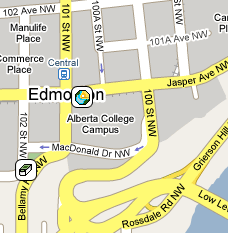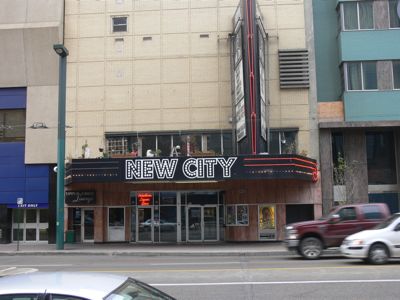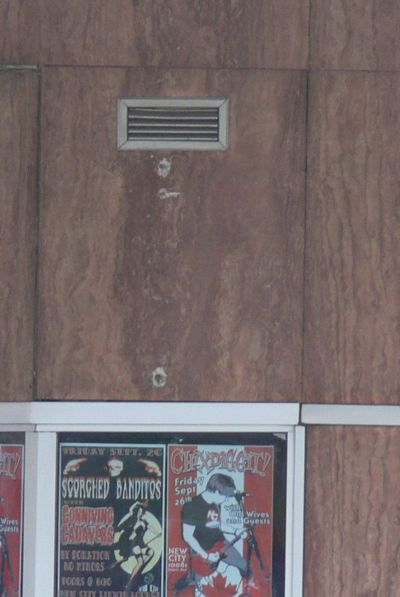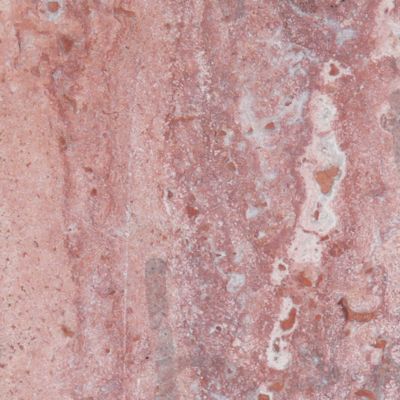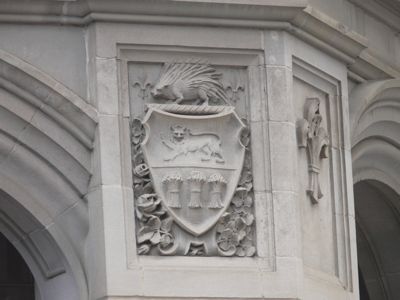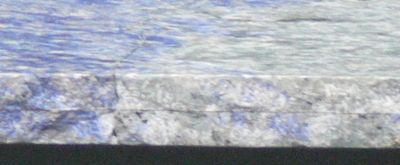IDENTIFICATION
Difficulty 2; Terrain 1.5; size - ?. Creator: Celestial Badger. Date First Hidden: Feb 22/08 Date Last Found: July 30/08. Description See Planning box as it gives the whole width of the page
Hints Comments
PLANNING
Welcome to the Edmonton Earthcache
Rock-Walk Tour #2
This short tour will direct you to visit six different locations in downtown Edmonton where you can witness the use of different rocks and minerals as incorporated into our city centre buildings. We don't often think about the importance of these natural products and their impact on our everyday lives, however by taking this tour, I hope to draw your attention to their significance in defining our architectural heritage. At each location, you will need to take note of what you see as there is a question that must be answered in order to log this Earthcache. If you haven't completed the first tour,GC19JJT please look it up and visit another 7 locations in downtown Edmonton. Please note that I have provided building locations based on either coordinates (using your GPSr with projections) as well as municipal addresses as the tall buildings may wreak havoc with your GPSr accuracy.
Okay .. Here we go ...
Start at the Posted Coordinates N53 32.452 W113 29.581
This will lead you to "New City" (The old Palladium Club) at 10081 Jasper Avenue. The entry way and outside facing is primarily a soft travertine and is likely in the order of a 100 million years old. The holes in travertine are most often plugged (as they are here) with an epoxy to reduce weathering on the rock. Travertine forms when algae grow in nutrient-rich pools and trap calcite crystals to form layers. As the layers are buried the algae suffocates, dies and then decomposes - forming gas bubbles that are preserved as holes in between the layers.
Question 1... There is another rock at the box office. There is a crest on it and it is a granite. What color is it and what is the animal at the top?
Now Project a waypoint at 59m at 081 degrees true from the posted coordinates
You should now be standing in front of the Union Bank at 10053 Jasper Avenue - built in 1910 at a cost of $60,000 and the only pre-World War I bank remaining in downtown Edmonton. The architect, Roland Lines, strayed from the norm of designing banks based on Greek or Roman patterns - the norm in that era - as he found inspiration from the Italian Renaissance. The façade consists of local pressed brick and Indiana limestone. Looking closely at this rock, it appears at first to resemble manmade products such as mortar or stucco, but is actually made of the mineral calcite. You will also notice (maybe) numerous small fossils within the rock.
Question 2.. Would this rock be classified as 'hard' or 'soft'?
Now Project a waypoint at 163m at 111 degrees true from the coordinates of location #2
You've now reached what I consider to be the pinnacle of the tour - the Macdonald Hotel at 10065 - 100 Street. The 'Mac' as it is known locally was built between 1912 and 1915 at a cost of $2.25 million dollars . a Kings ransom in that day and age. It was designed by the Montreal firm of Ross and MacFarlane in the best tradition of Canada's railway hotels for the Grand Trunk Pacific Railway. The design screams 'French Renaissance' with its Turrets with high pitched roofs and finials, the mix of arcades and corbelled balconies. It is one of Edmonton's best known landmarks.
Okay lets talk geology .. The exterior of the building is made from Indiana limestone and grandiorite - likely from the Lower Mainland area of BC. The limestone is used for the mass of the building and is also ornately carved. The grandiorite is used for the steps and other high traffic areas. If you have the opportunity to go inside the 'Mac", you will see that all three rock classifications have been utilized . igneous, sedimentary and metamorphic. They include conglomerate, Carrarra Marble, syenite or larvikite (Blue Pearl) and gneiss.
Question 3.. Looking at the ornate carvings, there are 4 crests ... what animal is pictured directly above the Coat of Arms on the very west end? (The crest you are looking for has three bushels of wheat and a lion contained within)
Now Project a waypoint at 140m at 071 degrees true from the coordinates of location #3
This should place you in front of the Courtyard Marriott Hotel at 1 Thornton Court. No history lesson this time - we'll just concentrate on the rock. A flat 'slaty' rock is used as decorative rock on an outer wall (not the columns) and on the floor and naturally breaks along the exposed surface. You need to touch this material to appreciate it.
Question 4.. With an understanding that 'true' slate is extremely flat, would you consider the slaty material used in this building a 'true' slate?
Now Project a waypoint at 140m at 043 degrees true from the coordinates of location #4
Well you've reached one of the newer buildings in downtown Edmonton - the Shaw Conference Centre at 9797 Jasper Avenue. This building opened to the public in 1983 at a cost in excess of $100 million dollars - 3 times more than originally budgeted! The building slopes toward the river valley and is held in place through the use of anchors drilled directly into the bedrock. You need to get inside to see the centerpiece of the building - a large, blue, tabular slab of syenite, a kind of 'no quartz' granite. This slab contains the blue mineral sodalite as well as large blebs of magnetite.You'll need a magnet (maybe) to answer the question.
Question 5.. What color is the magnetite in this slab?
Now Project a waypoint at 95m at 062 degrees true from the coordinates of location #5
This leads to our final stop on this tour - a nice piece of 'Art'. The rock comes from a gold mine site in Yellowknife and it is known as greenstone.
Question 6..What is this 'assembly' of rocks known as?
Take a picture of yourself and your GPSr in front of this 'Art' and post for your log.
Well that concludes the second tour and you will note there were six fairly simple questions that must be answered (please email those to me) and one picture that must be taken and posted with your log in order for you to log this earthcache. I hope you enjoyed the tour.
OUTCOME
I drove downtown on a Sunday morning but had a little difficulty finding an empty parking spot. Once that was solved I walked over to the first site. Two difficulties: one was that the building was locked (10 am on Sunday). Question 1 from the Earth Cache web site states: There is another rock at the box office. There is a crest on it and it is a granite. What color is it and what is the animal at the top? If the box office is inside, I wasn't able to see it. If it is outside, it has been removed. Here is a photo of the building, taken from across the street, and one taken above what may have been the box office with two holes showing where something (the plaque?) might have been at one time.
The serpentine rock is beautiful:
Question 2: The calcite in the Union Bank building would be classified as "soft". Here is a photo of the plaque on the side of the building that also shows the calcite of the walls.
Question 3: The animal above the crest is a porcupine. Here is a photo of this crest on the wall of the Macdonald Hotel:
Question 4: I would not consider the slate on the wall of the Courtyard Marriot Hotel to be a "true slate".
Question 5: The doors to the Shaw Conference Centre were locked. But I was able to take a photo of the large, blue, tabular slab of syenite through the glass. I then enlarged the photo:
The magnetite would be the small black flecks.
Question 6: The art is called an inukshuk. Here is a photo of me taken beside the inukshuk, plus one of my Garmin nuvi unit, also posing with the inukshuk.
In addition to the geology, I took a genuine interest in many of the historic plaques on the buildings in this area. A great way to spend the morning, and an incentive to read more on the geology of the area.
